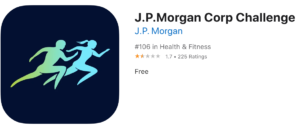Disclosure: I may earn affiliate revenue or commissions if you purchase products from links on my website. The prospect of compensation does not influence what I write about or how my posts are structured. The vast majority of articles on my website do not contain any affiliate links.
If you work for a big company in a big city, you’ve probably heard of the Chase Corporate Challenge. It’s an annual 3.5-mile race that serves some altruistic purpose, I’m sure. Mainly, though, it’s a reliable source of office banter and a motivator to train for an awkward distance on a mediocre racecourse.
I ran the Corporate Challenge each of my first 3 years in Chicago. I got progressively slower and always thought the course and distance were awful, but I looked forward to showing up and beating twenty thousand people every year. I really did.
Spring 2020 was rough because I had started really training after gaining entry to the Chicago Marathon. The whole, you know, the pandemic happened, so it seemed possible that neither the Chicago marathon nor my favorite 3.5-mile race would take place.
After some waiting, some trash talking, and some surprisingly quality mileage, I was surprised to learn that the Corporate Challenge would still occur in 2020, just as a virtual race. Awesome, I thought. JPMorgan Chase definitely has the resources to execute a flawless virtual race. However, as soon as I saw the tagline: #RemixTheRun, I knew it was going to go terribly. I was right.
I’m a runner; a semi-serious one at that. GPS watches are common amongst semi-serious runners. Surveying those not as serious, most have smartphones with multiple free fitness tracking apps, such as Strava, that can be used to capture GPS data. This is the technology that makes virtual races possible.
If you’re going to host a large virtual race, there are a few things you must do:
- Allow people to virtually register for the race
- Allow people to upload GPS data or, alternatively, create your own activity tracking software
- Ensure some amount of result integrity
- Display results of the race
Virtual races aren’t at a point where your local YMCA can host one without help from an outside software vendor. But it’s not rocket science. Plenty of virtual races go off without a hitch–just a few thousand dollars tossed to a small software vendor. Imagine my surprise when a corporation with 250,000 employees fails at this task.
What Happened
Things started off with a commercial featuring Kevin Hart. It was announced that the race would be virtual with roughly a three-week window to complete your run, wherein only your fastest tracked run would count. Your activity would be tracked through a brand-new app created by JPMorgan… just for this event. I can guarantee you that no semi-serious runners were present when that decision was made, but I digress.
When it came time to “race,” the Android app was available as the gun went off but the iOS app wasn’t. In a colossal failure, it took JPMorgan many more days to publish the iOS app. It must have been worth the wait, right?

Not exactly.
Not only was a runner not involved in the planning of this venture, but runners also weren’t consulted during development or testing. You see, activity tracking apps are simple. You touch start, you affix your phone to your bicep, and you click stop when you’re done.
With JPMorgan’s app, they made it so that your race data is lost when you do things that are almost subconscious in the year 2020. Your run will be erased whenever your phone locks. Your run will be erased when the J.P.Morgan Corp Challenge app is run in the background.
The reviews are exclusively left by people who made it a mile or more into their challenge before getting logged off and having their effort lost. I don’t have a snide comment to make here. Running is painful. The developers had one job and they blew it. Imagine being completely exhausted out on a lonely road somewhere just to realize that your effort didn’t count.
After a few damaged souls at my workplace put the word out that you needed to turn off auto-lock and run the app in the foreground, I had my dad drive me to the nearest ski resort where I proceeded to run down the access road. To my surprise, the app’s measurements were accurate compared to my Garmin. Also, someone whose voice sounded like the narrator of Sesame Street shouted words of encouragement as I completed each mile.
Once I finished, that was it. There were no live results. I’m just supposed to sit and wait until the 22nd when they finally calculate who ran what. And, hopefully, to eliminate the cheaters (bikers, mainly), which I highly doubt will happen.
Edit 10/20/20: There are now live results. Of course, because idiots are programming everything related to this event, it’s often impossible to find the results you’re looking for. The filtering just gets stuck in a spin loop, the rankings are blank, and you can sort be every field… aside from finishing time? Good idea.
Edit 11/1/20: Results became available around the end of the challenge window. As predicted, JPMC hasn’t done anything to remove bogus results by people who were biking. Apparently, a 45+-year-old who works at JP Morgan won the Chicago race while running 4:42 minute miles. If he was competing in a handicapped category, please excuse my ignorance and prying, but this type of thing needs to be made clear. Taking out the obvious fraud times, I finished in 10th place in Chicago thanks to my downhill blitz (as predicted, they did not store elevation data). What matters more to me is that there was a very legit runner who was deprived of first place due to there not being any running fraud measures in place. Could this have been any more of a disaster?
Damage Control
Do I think people should be fired over poor execution of a fitness tracking app? Yes. It’s an embarrassment to the company and a metaphor for corporate dysfunction. The app, as a concept, was completely useless and wasteful. But the execution could be a case study in ineptitude.
Has J.P. Morgan apologized? Have they tried to cover their asses in any way? At first glance, it seems that there’s been no attempt to fix things…
![]()
I’ve made a lot of money by faking things on the internet. This review distribution is a textbook example of someone paying for fake reviews or otherwise organizing a campaign to juice the system with five-star ratings that don’t reflect actual customer experiences. Do we really believe that for every five people who had an awful experience, there was one person who had such a positive experience that they felt a need to leave a five-star review?
Conclusion
I ran a really fast 3.5-mile time down a mountain. I had some time to reflect on how absurd the whole thing is. There’s a room full of engineers in some far off land sitting on a $50,000 payday laughing at how many virtual runs will be coupled with realized disappointment. There’s a corner office in Manhattan populated by a buffoon in a suit who probably doesn’t realize how majorly he’s fucked up. And, as I write this, there’s a sweaty man unlocking his phone to find that the most strenuous aerobic effort he’s made this year was all for naught. I’m not sure where the line is but the app will tell me when I cross it.




